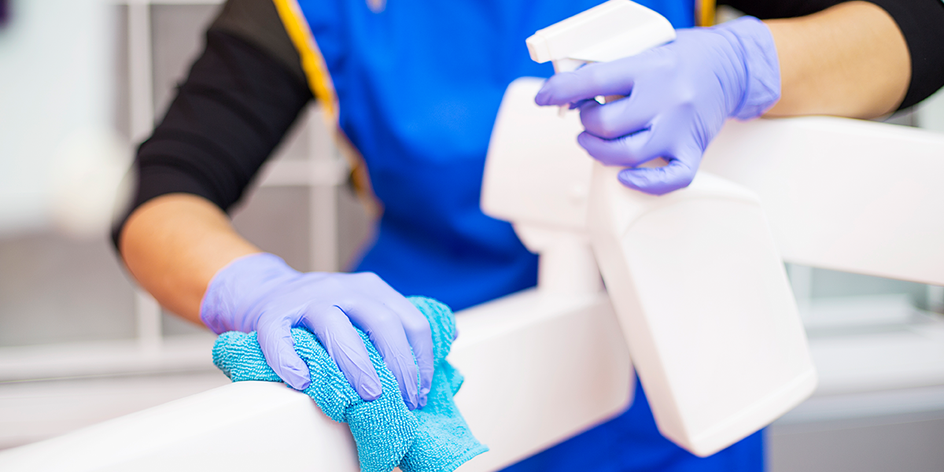Best practices for dental clinics to maintain a clean and safe environment
As healthcare professionals, dental clinics are responsible for maintaining a clean and safe environment for their patients and staff. This is especially important in the wake of the COVID-19 pandemic, which has highlighted the importance of infection control in healthcare settings. In this blog post, we will discuss some best practices for dental clinics to maintain a clean and safe environment in the U.S.
Follow CDC Guidelines
The Centers for Disease Control and Prevention (CDC) provide guidelines for infection prevention and control in healthcare settings. Dental clinics should follow these guidelines to ensure that they are providing a safe environment for their patients and staff. The CDC guidelines cover a wide range of topics, including hand hygiene, personal protective equipment (PPE), sterilization and disinfection, and environmental cleaning.
Use Personal Protective Equipment
Personal protective equipment (PPE) is essential for dental clinics to prevent the spread of infectious diseases. Staff should wear appropriate PPE, including gloves, masks, and eye protection, when providing patient care. Patients should also wear a mask while in the dental clinic. Dental clinics should provide PPE to their staff and educate them on its proper use and disposal.
Maintain a Clean Environment
Maintaining a clean environment is essential for preventing the spread of infectious diseases. Dental clinics should develop and implement a regular cleaning and disinfection protocol for all surfaces, equipment, and instruments. They should also ensure that all cleaning and disinfection products are registered with the Environmental Protection Agency (EPA) and follow the manufacturer's instructions for use.
Implement Sterilization Procedures
Sterilization is the process of killing all microorganisms, including bacteria, viruses, and fungi, on instruments and equipment. Dental clinics should implement sterilization procedures for all instruments and equipment that come into contact with a patient's blood, saliva, or other bodily fluids. Sterilization should be performed according to CDC guidelines and manufacturer's instructions.
Monitor and Manage Waste
Dental clinics generate a significant amount of waste, including infectious waste. Proper management of waste is essential to prevent the spread of infectious diseases. Dental clinics should develop and implement a waste management plan that includes proper handling, storage, and disposal of all types of waste. They should also ensure that all waste is disposed of according to federal, state, and local regulations.
Educate Staff and Patients
Education is key to maintaining a clean and safe environment in dental clinics. Dental clinics should provide education and training to their staff on infection prevention and control practices, including hand hygiene, PPE use, cleaning and disinfection, and waste management. They should also educate patients on the importance of hand hygiene, wearing a mask, and other infection prevention and control practices.
Screen Patients and Staff for Symptoms
Dental clinics should screen patients and staff for symptoms of COVID-19 or other infectious diseases before they enter the facility. This can be done through a questionnaire or temperature check. Patients or staff with symptoms should be referred for medical evaluation and not allowed to enter the dental clinic until they are cleared by a healthcare provider.
Implement Engineering Controls
Engineering controls are measures that can be implemented to reduce or eliminate exposure to infectious diseases. For dental clinics, this can include installing physical barriers, such as plexiglass shields, between the patient and staff. It can also include increasing ventilation in the facility to improve airflow and reduce the risk of airborne transmission.
Use Teledentistry
Teledentistry can be used to provide remote dental consultations and follow-up care. This can help to reduce the number of patients who need to physically visit the dental clinic, reducing the risk of exposure to infectious diseases. Teledentistry can also screen patients for COVID-19 symptoms before they come into the clinic.
Implement a Respiratory Protection Program
Dental clinics should implement a respiratory protection program for staff who may be at risk of exposure to infectious diseases through airborne transmission. This can include providing N95 respirators or other appropriate respiratory protection, fit-testing staff for respirators, and providing education and training on the proper use and care of respirators.
By following these additional best practices, dental clinics can further reduce the risk of exposure to infectious diseases and provide a safe environment for their patients and staff. It is important to stay up-to-date with the latest guidelines and recommendations from the CDC, OSHA, and other public health authorities to ensure that your dental clinic is providing the highest level of care possible.

